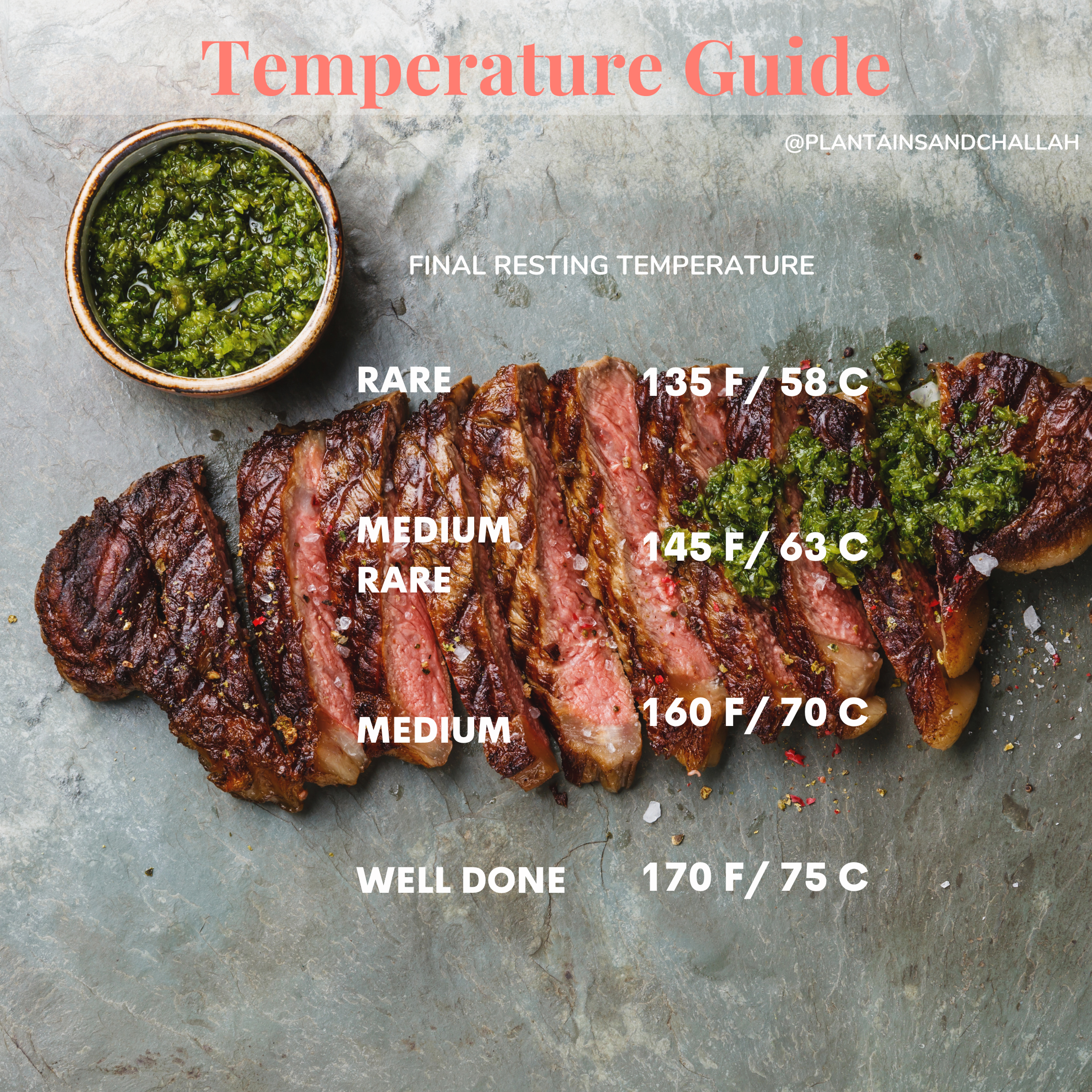
Getting That Perfect Steak
It’s not much different than cooking other meats properly. Of course always start with quality ingredients, but basically It boils down to timing, seasoning, temperature and rest.
Timing
Bring your protein to room temperature so it can cook evenly. The thicker the piece, the longer it needs.
Season your protein ahead of time. Same rule applies with the thickness of the protein. The thicker the piece is, the more time it will need to travel to the center. If you didn’t have time or forgot, it’s fine to season right before.
Seasoning
If you are starting with a good quality steak, you only need to season it simply and properly. Here is an example
Kosher Salt, Fresh cracked black pepper and maybe granulated garlic and onion if you want those extra flavors (these are my go to spices to keep it simple)
Cast Iron vs. Grill
Personally, I am a huge fan of optimizing flavor – and the way to get that is with the Maillard reaction. (That deep golden color) The most Maillard reaction is attained on cast iron. Of course, you can’t beat the flavor that the grill imparts, so just pick what you prefer.
Steps to Remember
- Preheat
- Add small amount of oil
- Add food
- Leave it alone. Allow it to release on it’s own.
- Use a thermometer* (see temperature chart)
- Rest
- Slice against the grain
Rest + Carryover Cooking
Resting the meat is important to allow the muscle fibers to relax, and the juices to redistribute. Carryover cooking happens at the same time. The heat continues to cook the food once you remove it from the heat, and I talk about it more in this post
You need to consider and account for this when checking for the *final resting temperature. You want to take it off a few degrees before, otherwise it will be overcooked by the time it carries over. The degrees to pull your meat from the heat cannot be given because it really depends on size and heat. Generally speaking, the larger it is and more heat it has, the wider the gap of pull temperature.
Temperatures
Please note that these temperatures are from the USDA’s safe cooking temperature recommendations. As always, you need to use your senses and experiment a bit to see what you like. When checking the temperature with the thermometer, you need to make sure you are getting the coolest temperature towards the center of the steak. This is precisely why I really like the thermapen because when you insert it most of the way into the steak and then pull backward, it can show the degrees changing automatically. It’s currently on closeout for $69 (from $99) until they run out of stock. (affiliate link)
Thermapen Mk4